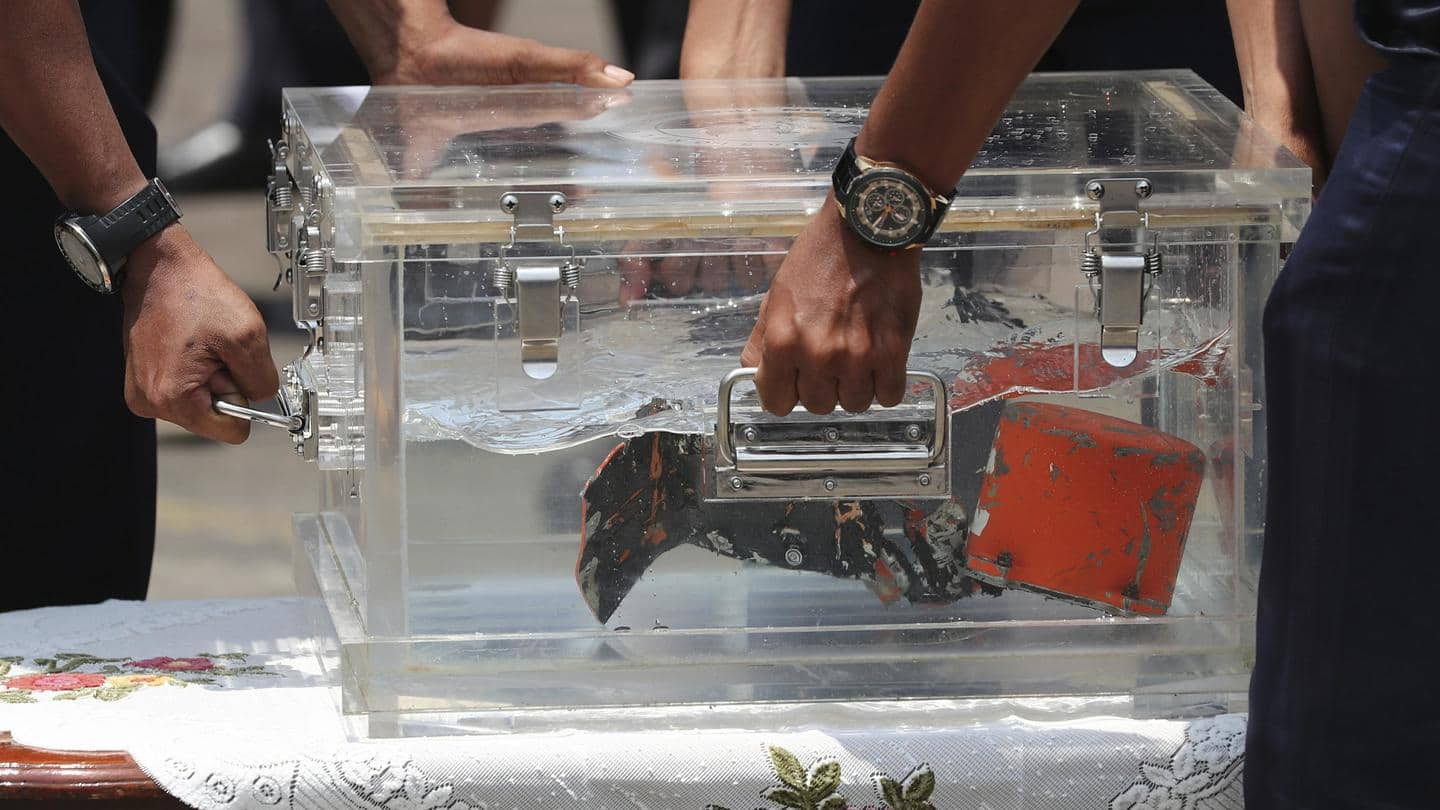
Indonesia finds Sriwijaya Air jet's cockpit voice recorder
What's the story
Indonesian navy divers have recovered the cockpit voice recorder of a Sriwijaya Air jet that crashed into the Java Sea in January, killing all 62 people on board, officials said Wednesday. Transportation Minister Budi Karya Sumadi said divers retrieved the cockpit recorder at about 8:00 pm, on Tuesday local time, near where the flight data recorder was recovered three days after the accident.
Investigation
Recorder might help determine why the Boeing nosedived
The contents of the recorder were not immediately available. However, the device could help investigators determine what caused the Boeing 737-500 to nosedive into the ocean in heavy rain shortly after it took off from Jakarta on January 9. If the voice recorder is undamaged, it might reveal what the pilots were doing or failing to do to regain control of the plane.
Search party
Search for voice recorder continued long after the crash
Searchers have recovered plane parts and human remains from an area between Lancang and Laki islands. The flight data recorder tracked parameters showing how the plane was being operated. Most retrieval efforts ended two weeks after the crash, but a limited search continued for the missing memory unit of the cockpit voice recorder, which apparently had broken away from other parts of the device.
Data
It will take more than a week to download data
The bright orange voice recorder was taken to Jakarta and given to the National Transportation Safety Committee (KNKT), which is overseeing the accident investigation. The Komite Nasional Keselamatan Transportasi Chairman, Soerjanto Tjahjono said the device will be taken to the investigators' black box facility. It will take five to seven days to dry and clean the device and to download its data, he added.
Information
Recorder was buried under one meter of seabed mud
Rear Admiral Abdul Rasyid Kacong, the Navy's western region fleet commander, said the voice recorder was buried under one meter of seabed mud at a depth of 23 meters. Divers removed debris and carried out desludging operations to reach the voice recorder.
Preliminary report
A preliminary report shed light on problems with an auto-throttle
Meanwhile, data from a preliminary investigation report, which didn't state any conclusions, showed that the plane's left engine's throttle lever moved backward on its own while the autopilot was engaged, reducing the power output of that engine before the jet plunged into the sea. It provided new details on persistent problems with an auto-throttle on the jet and the airline's efforts to fix them.
Information
Indonesia's aviation sector has seen tremendous growth since late 1990s
The 26-year-old jet had been out of service for almost nine months because of flight cutbacks due to the pandemic before resuming commercial flights in December. The disaster reignited concerns about safety in the aviation industry, which has grown quickly along with the economy since the fall of dictator Suharto in the late 1990s.
Information
US and EU had banned Indonesian carriers for several years
Notably, the United States had banned Indonesian carriers from operating in the country in 2007 but lifted that restriction in 2016, citing improved compliance with international aviation standards. The European Union lifted a similar ban in 2018.
Sriwijaya Air jet
The Lion Air crash in 2018 in Jakarta killed 189
Sriwijaya Air jet has witnessed minor safety incidents in the past. A farmer was killed in 2008 when a plane went off the runway while landing due to a hydraulic issue. In 2018, a Boeing 737 MAX 8 operated by Lion Air crashed killing 189 people. An automated flight-control system was blamed for it, but the Sriwijaya Air jet did not have that system.